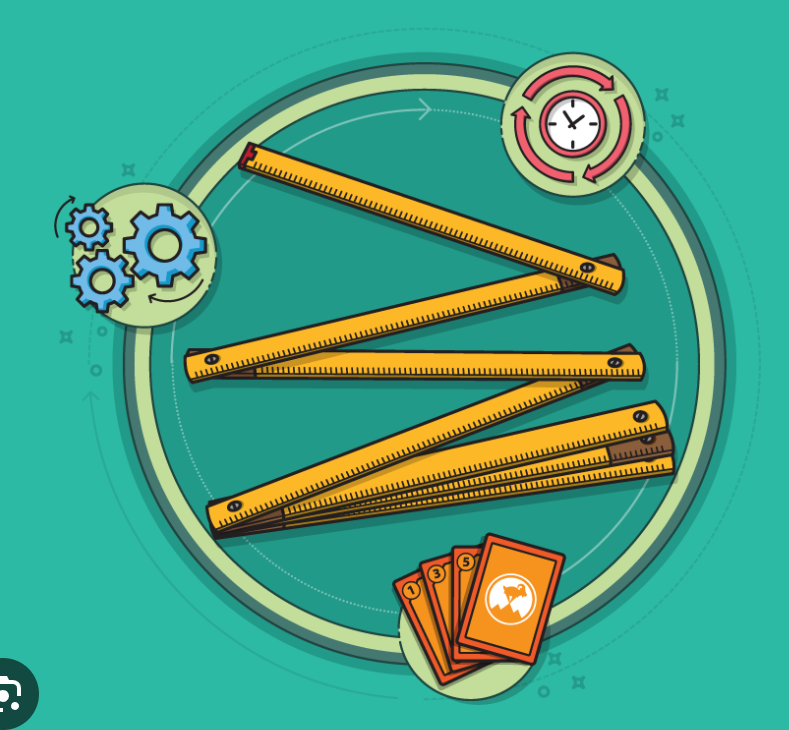Story points are a critical part of Agile methodology, offering teams a way to estimate the effort and complexity involved in completing user stories. Unlike traditional time-based estimates, story points focus on relative effort, allowing teams to plan more effectively while accommodating the uncertainties of development work.
This guide breaks down everything you need to know about story points, from what they are to how they can be used to streamline your Agile processes.
What Are Story Points?
Story points are a unit of measurement used by Agile teams to estimate the effort required to complete a user story. Rather than focusing on exact hours or days, story points emphasize the relative complexity, effort, and risk associated with the work. This approach shifts the conversation from “How long will this take?” to “How much effort does this require compared to other tasks?”
For example:
- A simple bug fix might be estimated as 1 story point.
- Developing a login page might be a 3-point story due to added complexity.
- Building an entire authentication system with multi-factor authentication might be an 8-point story.
By comparing tasks in this way, teams can better understand their workload and prioritize effectively.
Why Use Story Points?
Story points offer several advantages over traditional time-based estimation:
1. Focus on Effort, Not Time
Development work often involves uncertainties, such as unforeseen technical challenges or changes in requirements. Story points allow teams to estimate based on effort and complexity rather than trying to predict exact durations.
2. Improved Collaboration
Estimating in story points encourages team discussions about tasks, fostering alignment and shared understanding of the work.
3. Predictable Velocity
By tracking how many story points a team completes in each sprint (known as velocity), teams can forecast future capacity and plan sprints more effectively.
4. Flexibility for Change
Since story points are relative, they remain valid even if priorities or team composition changes, unlike time-based estimates that may need frequent adjustments.
How to Estimate Using Story Points
1. Define a Baseline
Start by selecting a reference task that your team agrees represents a specific number of story points, such as 2 or 3. Use this as a benchmark to compare other tasks.
For example:
- A login page might be your 3-point baseline.
A more comprehensive guide on establishing a baseline can be found here.
2. Compare Relative Effort
When estimating new user stories, ask:
- Is this story simpler, similar, or more complex than the baseline?
- Does it involve additional risks, dependencies, or unknowns?
For instance:
- If a new story requires similar effort to the login page, assign it 3 points.
- If it’s significantly simpler, it might be a 1.
- If it’s much more complex, consider assigning 5, 8, or higher.
3. Use a Predefined Scale
Many teams use the Fibonacci sequence (1, 2, 3, 5, 8, 13, etc.) for story points. This non-linear scale accounts for increasing uncertainty as tasks become more complex.
4. Involve the Whole Team
Story point estimation works best as a collaborative effort. Use tools like Planning Poker to ensure everyone has a voice in the process. Each team member independently selects an estimate, and discrepancies are discussed to reach a consensus.
Common Pitfalls to Avoid
1. Treating Story Points as Time
Story points are not a substitute for time estimates. Avoid equating 1 story point to a specific number of hours or days.
2. Overcomplicating the Process
Estimation should be a quick exercise. Spending too much time debating the exact story point value defeats the purpose of Agile’s iterative approach.
3. Inconsistent Baselines
If your team changes its baseline reference frequently, estimates will lose consistency. Stick to a single baseline and revisit it only when absolutely necessary.
Story Points and Team Velocity
Velocity is a measure of how many story points a team completes in a sprint. It provides a useful benchmark for planning and forecasting:
- Understanding Capacity: If your team consistently completes 20 story points per sprint, you can use that as a guide for planning future sprints.
- Adjusting for Change: Velocity helps account for changes in team size, priorities, or complexity.
For example:
- A team delivers 18, 22, and 20 story points over three sprints. Their average velocity is 20 points, which can be used to plan the next sprint.
Tips for Success
- Start Simple: Use easy-to-understand stories as your baseline to avoid confusion.
- Focus on Collaboration: Ensure all team members contribute to the estimation process.
- Regularly Review: Revisit your estimation practices periodically to ensure they remain effective and relevant.
- Leverage Tools: Use tools like Planning Poker Agility to streamline estimation and improve collaboration.
Enhance Estimation with Planning Poker Agility
To make story point estimation even more effective, consider using Planning Poker Agility. This tool helps teams:
- Collaborate on story point estimation in real time.
- Align on effort and complexity through interactive sessions.
- Integrate seamlessly with Jira to keep your backlog organized.
With Planning Poker Agility, your team can estimate smarter and deliver better. Try it today to enhance your Agile practices.
Final Thoughts
Story points are a valuable tool for Agile teams, offering a flexible and collaborative way to estimate user stories. By focusing on effort and complexity rather than time, story points help teams navigate uncertainties and plan more effectively. With the right approach and tools, your team can use story points to drive better outcomes and maintain a sustainable pace.
Start refining your estimation practices today and see the difference story points can make in your Agile workflow.


One Comment
Laura
Thanks, that makes sense now! I was a bit confused in backlog refinement